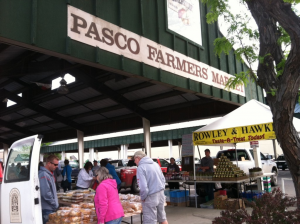Growing up, watching the flat acres of land around me rise into homes, apartments, stores, malls, and offices, I thought that the new neon signs and the tall shiny buildings were fun, but I didn’t understand that they were signs of a big change known as gentrification.
Gentrification often occurs when investment into shared spaces draws in newcomers. Those newcomers can drive up housing and rental prices, resulting in the community that was originally there having to leave because they’re not able to afford it. Aspects of the original culture and heritage are often lost as well.
The effects of gentrification can be seen in large, developed, urban cities, such as Seattle, Portland and Los Angeles, which include rising housing prices and an increasing homeless population.
This summer I’ve been working with the Downtown Pasco Development Authority (DPDA) to help local business owners regain their voices within the business community while strengthening the community and rich culture within Pasco, a town about 30 min away from where I live that is primarily Hispanic population. As a result, business owners who often only speak Spanish are left out of the loop whether it is due to language barriers or complicated uses of terminology. To begin research, we surveyed locals with questions ranging from their own knowledge of gentrification to their ideas for the future of the city. In exchange for their participation, we gave out $20 vouchers for the local farmer’s market to support the business stands there.
The target of this project is to allow the local business community and the people living there to have access to information that helps them grow and thrive. We are joining the DPDA to start a podcast to address some of the ideas and issues people brought up within the survey to allow them to get a better sense of what is going on within the community, in ways they understand, in addition to how to grow as a city but also prevent the potentially harmful effects of gentrification.
-Taryn Boonpongmaneee ’24
